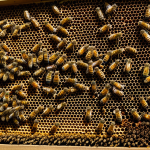Overview of Norwich Terriers
The Norwich Terrier is a charming small breed known for its urban adaptability. Originating from England in the early 20th century, these dogs were bred to control vermin, making them spirited and alert companions. Their compact size, usually weighing around 12 pounds, makes them ideal for apartment living. Despite their small stature, they are surprisingly sturdy and robust, with a dense coat that adds to their distinctive appearance.
Notably, Norwich Terriers exhibit a lively and friendly temperament. They are outgoing and enjoy social interactions, both with humans and other animals. This trait, combined with their high energy levels, means they thrive on engagement and play. However, they also possess a tenacious streak, a nod to their hunting background, which can manifest in a determined nature.
Also to discover : Unleashing Insights: How GPS Collars Revolutionize Urban Cat Tracking
In urban settings, their adaptability is evident. They adjust well to confined spaces, provided they receive sufficient exercise and mental enrichment. Because of their social nature and desire for companionship, they integrate well with families and can be especially affectionate with children, making them excellent family pets.
Exercise Needs and Activity Levels
Norwich Terriers require ample exercise requirements to maintain their spirited nature. Ideally, they should engage in at least 30 minutes to an hour of activity daily. This can range from brisk urban walking to playful games in a safe, enclosed area. Given their intelligent and energetic disposition, mental stimulation is equally crucial. Utilizing puzzle toys or teaching new tricks keeps them mentally sharp and content in an urban setting.
Also to see : Can You Foster a Thriving Bee Colony in Your London Garden? The Ultimate Urban Beekeeping Handbook
Incorporate city-friendly activities that align with their liveliness. Visits to dog-friendly parks or engaging in agility exercises can prove beneficial. Specifically, agility courses are excellent, offering both physical exertion and mental engagement.
Ensuring a balance between physical and mental stimulation caters to the nuanced needs of this breed. Neglecting their exercise requirements may result in restlessness or undesirable behaviours, especially in a compact living environment.
Owners in urban areas should consider structured daily routines, incorporating both exercise and enrichment. This approach helps fulfil the Terrier’s natural instincts while enhancing their quality of life in the city. Keeping their minds and bodies active can also improve their adaptability to apartment living.
Social Behavior and Compatibility
Norwich Terriers exhibit a strong desire for social interaction, making them highly compatible as family pets. They flourish in environments where they can engage with humans and other animals. Their friendly disposition and playful nature suit active families, especially those with children who can match their energy levels. These dogs form deep bonds with their owners and are affectionate and loyal companions.
Adapting to apartment life requires careful attention to their social needs. Regular interactions and playtime ensure they remain content and prevent feelings of isolation. Crucially, proper socialization from a young age fosters harmonious cohabitation with other pets, reducing potential dominance issues.
Managing behaviors like barking and separation anxiety in apartments is essential. While they tend to be vocal, training can mitigate excessive barking. Thoughtfully planned routines and dedicated attention help keep them relaxed and happy. Addressing separation anxiety involves gradual training to build independence alongside comforting environments enriched with toys and familiar scents. Ensuring these social and compatibility aspects are met, Norwich Terriers can thrive as cooperative and engaging pets, even in more confined spaces.
Tips for Apartment Living with Norwich Terriers
Living with Norwich Terriers in an apartment requires creating a comfortable environment that caters to their unique needs. It’s important to provide essential supplies, such as a cozy bed, food and water bowls, and enrichment toys that promote mental stimulation. Puzzle toys and interactive games can keep them engaged and prevent boredom.
Maintaining a clean and organized pet-friendly apartment involves regular cleaning and pet-proofing. Invest in a good vacuum to tackle shed hair and consider covered trash bins to deter curious terriers. Utilizing pet gates can help manage space and create designated dog-friendly zones within your home.
To ensure a successful indoor living experience, include outdoor time as part of your routine. Frequent walks and exposure to different environments help them adapt to urban living and fulfil their exercise requirements. Remember, these energetic breeds thrive on routine and structure, so incorporate consistent daily activities.
Ultimately, Norwich Terriers can adapt well to apartment living if their physical and mental needs are met. By establishing a supportive environment, owners can foster a harmonious life with their terrier in the city.
Potential Challenges of City Living
Navigating city life with Norwich Terriers can present unique challenges, stemming largely from their breed-specific characteristics and the urban environment. Noise sensitivity is a noteworthy concern; these terriers may react to unfamiliar sounds typical of bustling cityscapes. Addressing this involves gradual exposure and positive reinforcement to create reassuring associations, easing their adjustment to urban living.
Stimulation overload is another challenge in the vibrant city. The busy environment can overwhelm these energetic dogs, resulting in restlessness or anxiety. Crucially, structured routines that incorporate both mental and physical engagement can mitigate this, allowing them to enjoy their surroundings without stress.
In a confined environment like an apartment, one might observe potential behavioural issues such as destructive chewing or excessive barking. Solutions include providing abundant toys for mental and oral stimulation and incorporating daily training sessions to channel their natural vivacity productively.
Ultimately, understanding these challenges and implementing proactive strategies can foster a harmonious coexistence for both Norwich Terriers and their urban-dwelling owners, promoting a fulfilling and mutually enjoyable living arrangement.
Real-Life Experiences and Testimonials
Discover how Norwich Terrier owners manage city life with personal insights and anecdotes. For instance, Sarah, living in Manchester, shares how her terrier, Bella, adjusted to bustling urban environments. “Owner experiences with such adaptable breeds are eye-opening,” she says. Bella initially struggled with city noise, but through gradual exposure and patience, she began to thrive.
Testimonials reveal successful strategies for integrating these terriers into apartment living. Urban pet owners, such as Tom, highlight the importance of routine: “Consistency is key. Structured daily activities keep our terrier’s mind and body engaged.” Such routines help mitigate challenges like stimulation overload.
Success stories abound, with many owners attributing their terriers’ happiness in city settings to thoughtful planning and understanding of breed-specific needs. Susan highlights practical advice, suggesting owners invest in training to curb excessive barking—a common city living concern.
The impact of city life on Norwich Terriers’ well-being is profound when owners commit to creating supportive environments. By understanding their pets’ distinct qualities and implementing effective solutions, these urban dwellers achieve a harmonious coexistence, displaying the adaptability of this unique breed.









